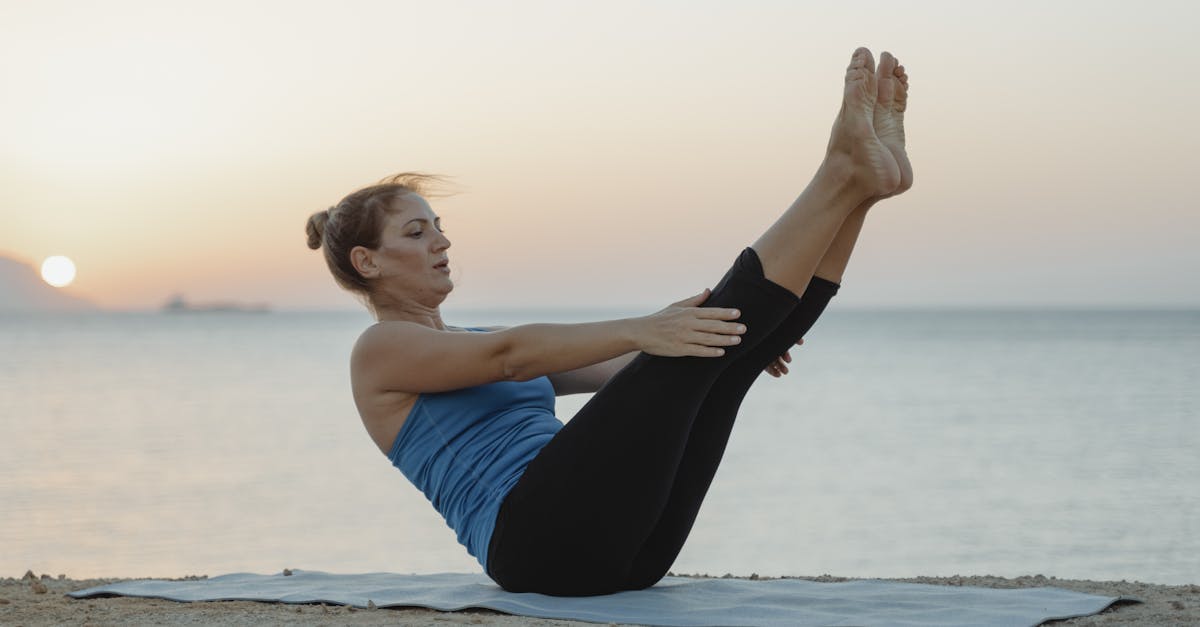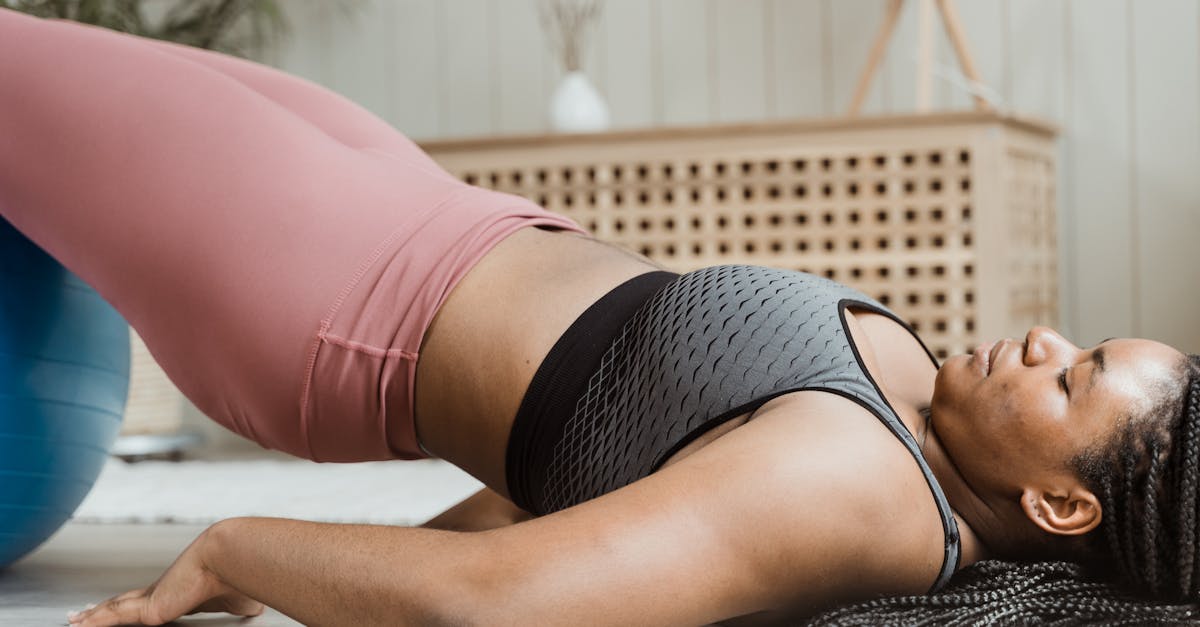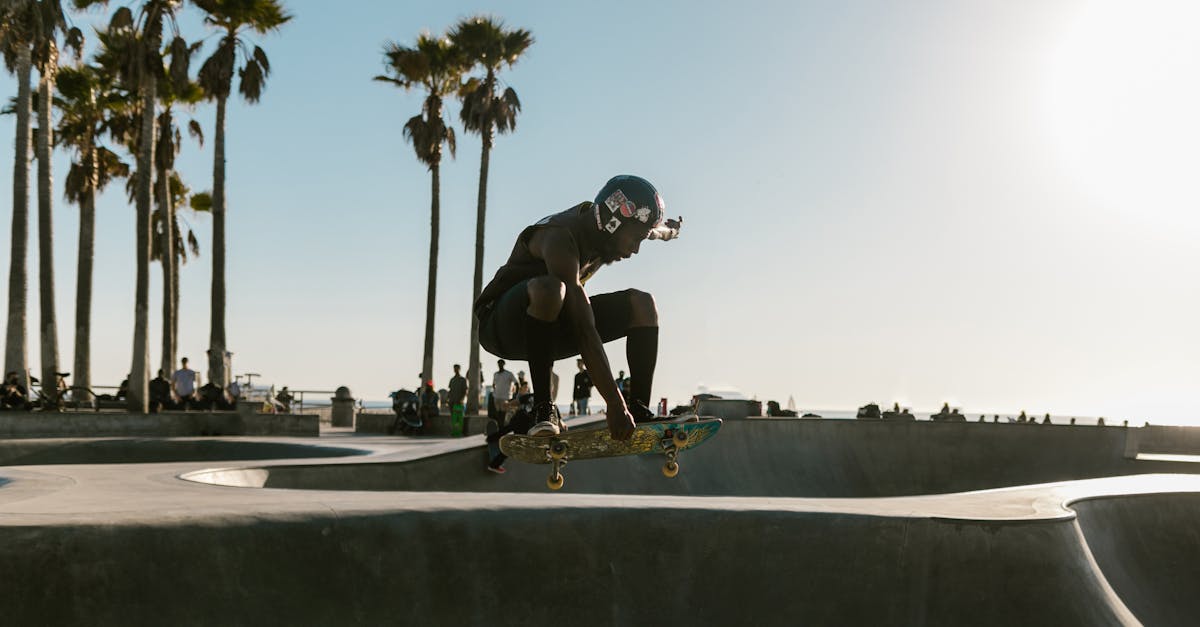Best Hip Flexor Exercises for Athletes: Enhancing Performance and Flexibility
Unlock Your Athletic Potential: The Essential Guide to Hip Flexor Exercises

Best Hip Flexor Exercises for Athletes: Enhancing Performance and Flexibility
Your hip flexor muscles play a critical role in athletic performance and overall mobility. Strong hip flexors are essential for powerful strides in running and jumping, improved balance and coordination, and reduced risk of injuries. Incorporating specific exercises that target these muscles into your workout routine can significantly enhance your athleticism and well-being.
In this article, we’ll delve into the top 5 most effective hip flexor exercises, explaining their benefits, proper form, and how to integrate them into your training program. Whether you’re a seasoned athlete or just starting your fitness journey, these exercises will help you unlock the full potential of your hip flexors, maximizing your performance and flexibility.
1. Introduction: Importance of Hip Flexor Muscles
Introduction: Importance of Hip Flexor Muscles
Hip flexor muscles are a group of muscles located in the front of the thighs that are responsible for lifting the knees towards the chest. They play a crucial role in various everyday movements, including walking, running, jumping, and climbing stairs. For athletes, strong hip flexors are essential for optimal performance in sports that require powerful leg movements, such as sprinting, cycling, and soccer.
In addition to their role in athletic performance, hip flexors also contribute to overall mobility and flexibility. Tight or weak hip flexors can lead to imbalances in the muscles around the hips and knees, which can cause pain, discomfort, and reduced range of motion. Regular stretching and strengthening of the hip flexors can help improve posture, prevent injuries, and enhance overall well-being.
Understanding the significance of hip flexor muscles is the first step towards optimizing their function and unlocking your full athletic potential. By incorporating targeted exercises into your workout routine and paying attention to proper form, you can strengthen and improve the flexibility of these essential muscles, setting the foundation for enhanced performance and a healthier, more active lifestyle.
2. 5 Effective Hip Flexor Exercises

5 Effective Hip Flexor Exercises
1. Kneeling Hip Flexor Stretch
-
Step-by-step instructions: Kneel on the floor with your right knee bent and your right foot flat on the floor in front of you. Place your left leg extended straight back behind you, with your toes pointed. Lean forward and place your hands on your right thigh, just above your knee. Gently push your hips forward until you feel a stretch in the front of your right hip. Hold for 30 seconds, then switch legs.
-
Variations: You can also perform this stretch with your back knee elevated on a bench or chair to increase the intensity.
2. Standing Quad Stretch with Hip Flexor
-
Step-by-step instructions: Stand with your feet hip-width apart. Bend your right knee and grab your right foot with your right hand, pulling your heel towards your glutes. Simultaneously, reach your left arm overhead and bend your left elbow, grabbing your left hand with your right hand. Gently pull your right heel towards your glutes and your left elbow towards your head, feeling a stretch in the front of your right hip and your left quadriceps. Hold for 30 seconds, then switch legs.
-
Variations: To increase the intensity, you can hold a weight in your left hand as you perform the stretch.
3. Hip Flexor Roll
-
Step-by-step instructions: Lie on your back with your knees bent and your feet flat on the floor. Place a foam roller under your lower back, just above your glutes. Lift your hips off the floor and roll the foam roller up and down along the front of your thighs, applying pressure to your hip flexors. Continue rolling for 30-60 seconds.
-
Variations: You can also perform this exercise with a lacrosse ball or a tennis ball for a more intense massage.
Kneeling Hip Flexor Stretch
Kneeling Hip Flexor Stretch
The kneeling hip flexor stretch is a classic and effective exercise for improving hip flexor flexibility. It is particularly beneficial for athletes who engage in activities that require a lot of hip flexion, such as running, jumping, and cycling.
Step-by-step instructions:
- Start by kneeling on the floor with your right knee bent and your right foot flat on the floor in front of you.
- Place your left leg extended straight back behind you, with your toes pointed.
- Lean forward and place your hands on your right thigh, just above your knee.
- Gently push your hips forward until you feel a stretch in the front of your right hip.
- Hold the stretch for 30 seconds, then switch legs.
Benefits:
- Improves hip flexor flexibility
- Reduces tightness in the hip flexors
- Helps prevent hip pain and injuries
- Improves posture
- Enhances athletic performance
Proper form:
- Keep your back straight and your core engaged throughout the stretch.
- Avoid arching your back or rounding your shoulders.
- Only go as far as you can without experiencing pain.
- Hold the stretch for 30 seconds and breathe deeply.
Standing Quad Stretch with Hip Flexor
Standing Quad Stretch with Hip Flexor
The standing quad stretch with hip flexor is a compound stretch that targets both the quadriceps and hip flexors. It is a great exercise for improving flexibility in these muscle groups, which can help to reduce pain, improve posture, and enhance athletic performance.
Step-by-step instructions:
- Stand with your feet hip-width apart.
- Bend your right knee and grab your right foot with your right hand, pulling your heel towards your glutes.
- Simultaneously, reach your left arm overhead and bend your left elbow, grabbing your left hand with your right hand.
- Gently pull your right heel towards your glutes and your left elbow towards your head, feeling a stretch in the front of your right hip and your left quadriceps.
Benefits:
- Improves flexibility in the quadriceps and hip flexors
- Reduces tightness in the quadriceps and hip flexors
- Helps prevent knee pain and injuries
- Improves posture
- Enhances athletic performance
Proper form:
- Keep your back straight and your core engaged throughout the stretch.
- Avoid arching your back or rounding your shoulders.
- Only go as far as you can without experiencing pain.
- Hold the stretch for 30 seconds and breathe deeply.
Hip Flexor Roll
Hip Flexor Roll
The hip flexor roll is a self-massage technique that can help to release tension and improve mobility in the hip flexors. It is a great way to relieve pain, improve posture, and enhance athletic performance.
Step-by-step instructions:
- Lie on your back with your knees bent and your feet flat on the floor.
- Place a foam roller under your lower back, just above your glutes.
- Lift your hips off the floor and roll the foam roller up and down along the front of your thighs, applying pressure to your hip flexors.
Benefits:
- Releases tension in the hip flexors
- Improves hip flexor mobility
- Reduces pain in the hips and lower back
- Improves posture
- Enhances athletic performance
Proper form:
- Keep your back straight and your core engaged throughout the exercise.
- Avoid rolling the foam roller over your bones or joints.
- Only go as far as you can without experiencing pain.
- Roll for 30-60 seconds and breathe deeply.
Copenhagen Plank
Copenhagen Plank
The Copenhagen plank is a challenging exercise that strengthens the hip flexors and improves stability. It is a great exercise for athletes who want to improve their performance in sports that require strong hip flexors, such as running, jumping, and cycling.
Step-by-step instructions:
- Stand with your feet shoulder-width apart, facing a sturdy object like a wall or a chair.
- Place your right foot on the object, with your toes pointing forward and your heel on the ground.
- Step back with your left leg and extend it straight back behind you, keeping your toes pointed and your heel lifted off the ground.
- Lower your body down by bending your right knee and keeping your left leg extended.
- Hold the position for 30-60 seconds, then switch legs.
Benefits:
- Strengthens the hip flexors
- Improves stability
- Reduces pain in the hips and lower back
- Improves posture
- Enhances athletic performance
Proper form:
- Keep your back straight and your core engaged throughout the exercise.
- Avoid arching your back or rounding your shoulders.
- Only go as far as you can without experiencing pain.
- Hold the position for 30-60 seconds and breathe deeply.
Banded Hip Flexor Resistance
Banded Hip Flexor Resistance
Banded hip flexor resistance exercises are a great way to strengthen the hip flexors and improve athletic performance. Resistance bands provide a variable resistance that challenges the muscles throughout the range of motion, making them an effective tool for building strength and power.
Step-by-step instructions:
- Attach a resistance band to a sturdy object at about waist height.
- Stand facing the object, with your feet shoulder-width apart and the band looped around your right foot.
- Step back with your left leg and extend it straight back behind you, keeping your toes pointed and your heel lifted off the ground.
- Bend your right knee and pull your right foot towards your chest, keeping your left leg extended.
- Slowly lower your right foot back down to the starting position.
Benefits:
- Strengthens the hip flexors
- Improves athletic performance
- Reduces pain in the hips and lower back
- Improves posture
- Enhances stability
Proper form:
- Keep your back straight and your core engaged throughout the exercise.
- Avoid arching your back or rounding your shoulders.
- Only go as far as you can without experiencing pain.
- Perform 8-12 repetitions on each leg.
3. Benefits of Strong Hip Flexors
Benefits of Strong Hip Flexors
Strong hip flexors are essential for a variety of everyday movements, including walking, running, jumping, and climbing stairs. They also play a crucial role in athletic performance, particularly in sports that require powerful leg movements, such as sprinting, cycling, and soccer.
Improved running efficiency: Strong hip flexors help to propel you forward when you run. They allow you to take longer strides and maintain a good running form, which can improve your speed and endurance.
Reduced risk of injuries: Strong hip flexors help to stabilize the pelvis and lower back. This can help to reduce the risk of injuries, such as lower back pain, hip pain, and knee pain.
Improved balance and coordination: Strong hip flexors help to improve balance and coordination. This can benefit you in a variety of activities, from walking and running to playing sports.
Enhanced athletic performance: Strong hip flexors are essential for a variety of athletic activities. They can help you to improve your speed, power, and agility.
By incorporating exercises that target the hip flexors into your workout routine, you can reap the benefits of strong hip flexors and improve your overall health and fitness.
4. Tips for Incorporating Hip Flexor Exercises

Tips for Incorporating Hip Flexor Exercises
Incorporating hip flexor exercises into your workout routine is a great way to improve your overall health and fitness. Here are a few tips to help you get started:
Frequency: Aim to perform hip flexor exercises 2-3 times per week.
Duration: Each exercise should be performed for 10-15 repetitions. If you are new to hip flexor exercises, start with 1-2 sets of each exercise and gradually increase the number of sets as you get stronger.
Progression: As you get stronger, you can increase the challenge of your hip flexor exercises by:
- Increasing the number of repetitions
- Increasing the number of sets
- Adding weight or resistance
Warm-up: Before performing any hip flexor exercises, it is important to warm up your muscles. This will help to prevent injuries and improve your range of motion.
Cool-down: After performing hip flexor exercises, it is important to cool down your muscles. This will help to reduce muscle soreness and stiffness.
By following these tips, you can safely and effectively incorporate hip flexor exercises into your workout routine and reap the benefits of strong hip flexors.
5. Conclusion: Optimizing Performance and Flexibility
Conclusion: Optimizing Performance and Flexibility
Hip flexors are essential muscles for athletes, playing a crucial role in athletic performance and overall mobility. By incorporating the hip flexor exercises presented in this article into your workout routine, you can strengthen and improve the flexibility of these important muscles, unlocking your full athletic potential.
The benefits of strong hip flexors are numerous. They can help you to improve your running efficiency, reduce your risk of injuries, and enhance your overall athletic performance. Additionally, strong hip flexors can help to improve your posture, reduce lower back pain, and improve your balance and coordination.
If you are looking to improve your athletic performance and flexibility, I encourage you to add hip flexor exercises to your workout routine. By following the tips provided in this article, you can safely and effectively incorporate these exercises into your training program and reap the benefits of strong hip flexors.
Quiz
1. Which of the following is NOT a benefit of strong hip flexors?
(a) Improved running efficiency (b) Reduced risk of injuries (c) Increased muscle mass
2. True or False: Hip flexor exercises should only be performed once a week.
3. Which of the following exercises is NOT included in the article?
(a) Kneeling hip flexor stretch (b) Standing quad stretch with hip flexor (c) Hamstring curl
4. True or False: It is important to warm up before performing hip flexor exercises.
5. Which of the following is NOT a tip for incorporating hip flexor exercises into a workout routine?
(a) Start with a low number of repetitions and sets (b) Increase the challenge gradually (c) Avoid using proper form
Answer Key
1. (c) Increased muscle mass 2. False 3. (c) Hamstring curl 4. True 5. (c) Avoid using proper form
